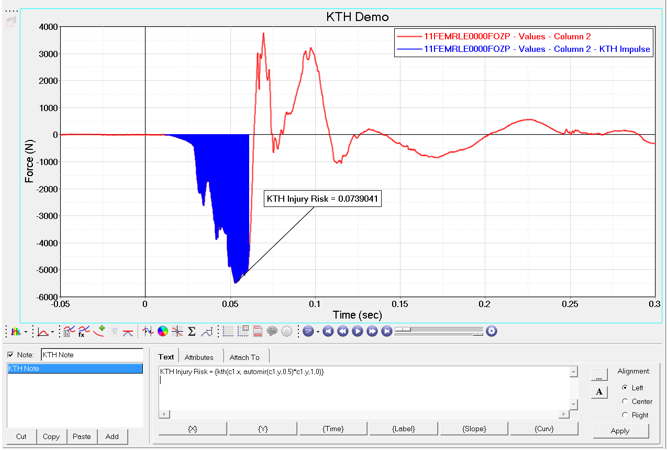automir
Returns a mirror factor (either 1 or -1) that is value-dependent, either by position of the centroid or the position of the min/max values relative to the x axis.
Syntax
automir(yvec, trigfact, xvec(optional))
Input
- yvec
- The dependent vector.
- trigfact
- A factor between 0 and 1.
- xvec(optional)
- The independent vector. If this argument is provided, the position of the centroid will be used.
Example
KTH Injury Risk =
{kth(c1.x, automir(c1.y,0.5)*c1.y,1,0)}
Figure 1.
Comments
Sometimes curves (especially injury test curves) are scaled with a factor of -1, which requires user interaction to evaluate the math correctly. This factor can be used in any math expression. automir makes reports more robust so that they incorporate both curves.